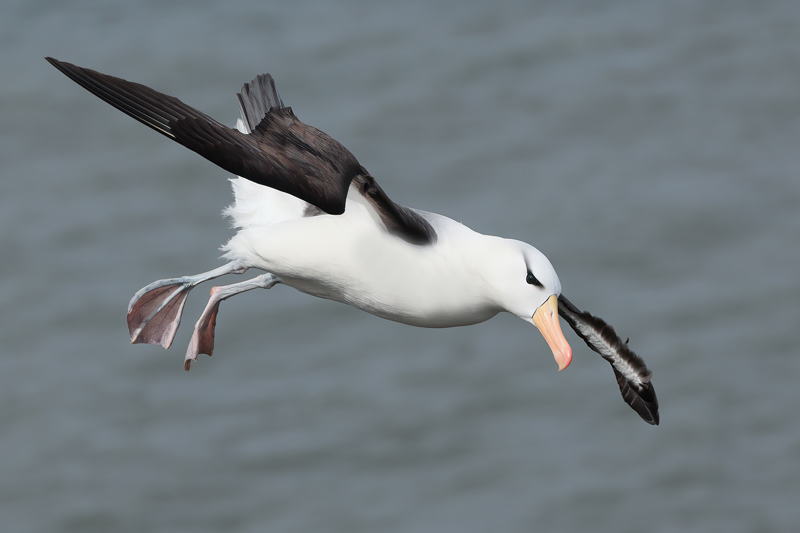Despite making up close to half of the Earth’s surface, and being important to a vast diversity of species, the High Seas have been largely left unmanaged. This month, the development of a ground-breaking new treaty is a promising step to protecting nature across these remote waters, and demonstrates the type of international cooperation we will need to avert the biodiversity crisis.
One of the headlines from the Convention of Biodiversity’s new Global Biodiversity Framework, a 10-year plan for governments to save the natural world, was the pledge to protect 30% of our land and seas. As land dwellers, much of our attention is naturally focused on terrestrial systems, or marine environments close to our coastlines. However, the High Seas, which are those 200 nautical miles from the coast beyond any country’s national jurisdiction, make up over half of the ocean. These waters are home to a diverse range of marine ecosystems and species – for instance, BirdLife led research has shown that seabirds spend nearly 40% of their time soaring over these remote regions. If we are to truly protect nature at the scale we need, and have pledged to, it’s critical that our actions are managed in the High Seas.
Despite this, until recently the international community has seemingly had an ‘out of sight, out of mind’ outlook to this vast region, with most of the High Seas being largely unmanaged. However, this week the conservation world has been celebrating the development of a new treaty called the Biodiversity Beyond National Jurisdiction (BBNJ) agreement which represents a breakthrough for the protection of these waters.

Black-browed Albatross, copyright Glyn Sellors, from the surfbirds galleries
Following two tireless weeks of discussions at the UN headquarters in New York, the agreement provides a foundation for our activities in the High Seas to be managed, and for them to be recognised as a common resource for humanity. The agreement comes after more than 15-years of negotiations, and for the first time creates a framework for countries to propose and establish Marine Protected Areas (MPAs) in the High Seas. This is a hopeful sign for the long-term protection of unique ecosystems such as the Sargasso sea and the diverse range of species that depend on them.
Along with creating a pathway for the formal protection of these vitally important sites, there are other promising aspects to the agreement. Outside of protected areas, it has set out basic requirements to assess the impact of activities such as aquaculture and energy installation on the environment, and for these to be managed accordingly. Another important element of the treaty is its push to address the inequality of countries benefitting from resources in these international waters. Given their remote nature, throughout history only a handful of developed nations have reaped the benefits of scientific discoveries and commercial products produced from genetic samples taken in the High Seas. The new treaty has therefore set out a range of frameworks to ensure that these benefits, whether monetary or non-monetary, are shared more equitably to developing countries.
The treaty is welcome news for the future of marine conservation, and that of the entire planet, and is perhaps the biggest breakthrough in marine management since the UN convention on the law of the sea in 1982. It is hoped it will be adopted in the next few weeks, before officially coming into force once it receives 60 signatories.
“It’s a really important for marine biodiversity conservation to see this Treaty reach its closing phase, there is still the adoption and ratification to complete, but it’s a momentous task to have agreed the text of the Convention after 15 years of negotiation and preparatory meetings,” says Dr Susan Waugh, Global Marine Policy Coordinator at BirdLife International. “Now the management of the High Seas has an appropriate framework for managing human activities, and importantly the mechanism to enable protection of this important ecosystem has been secured. Under the BBNJ agreement, it will now be possible to create and manage marine protected areas on the High Seas. This area is vital for biodiversity, but also for the earth’s climate, covering half of the planet’s surface.”
Whether working with high seas fisheries organisations to implement measures to reduce bycatch or tracking thousands of seabirds to identify the most important sites for the groups, which was critical for the designation of the 600,000km2 NACES (North Atlantic Current and Evlanov Sea basin) as an MPA, BirdLife already has a proven track record of protecting nature at the high seas.